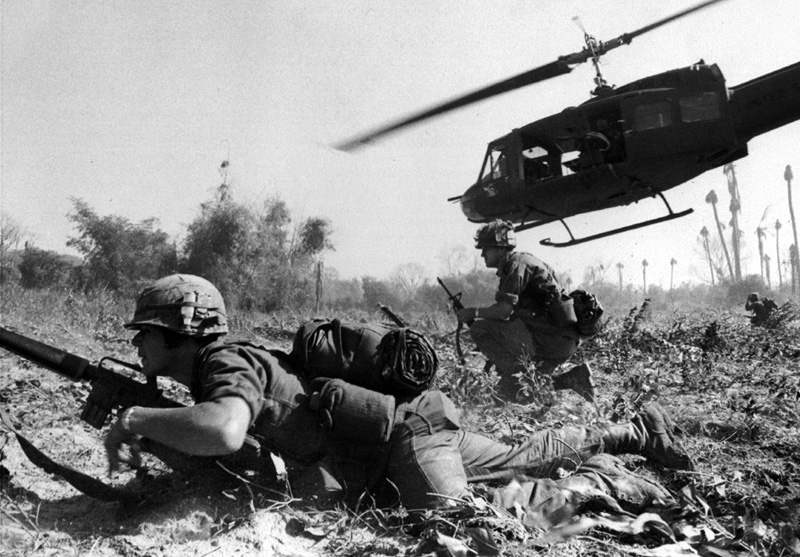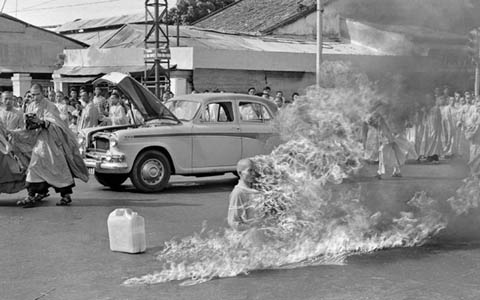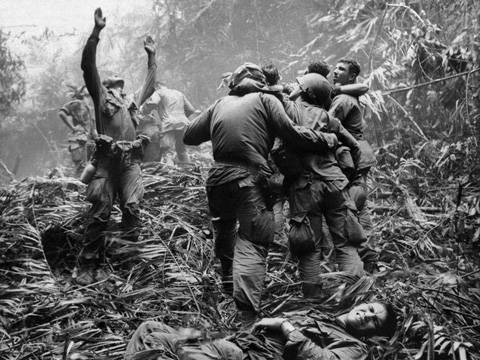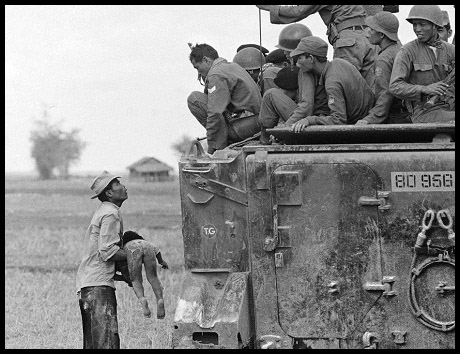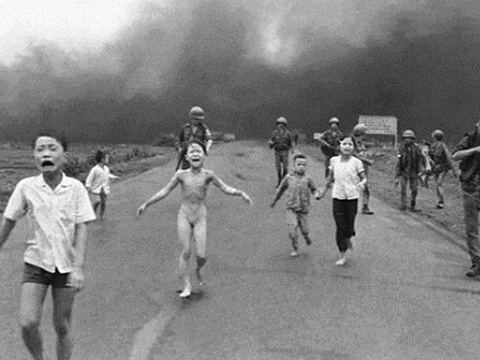The New York Times judged the images of Vietnam war that defined the era. It is half of a century since Vietnam war was ended, what are Americans likely to remember about it?
What impressed Americans most is the image of Thich Quang Duc Buddhist monk burned himself with gasoline in the street or the photo of a 9 year-old naked girl running down the road, screaming as her skin burns from napalm.
Perhaps Vietnam battlefield is described through photos more than on television. The photos’ authors are well-known American war photographers including three most prominent names: Malcolm W. Browne, Eddie Adams and Nick Ut. They are the experienced photographers, particularly war photography. In this October, the A.P will publish a book “Vietnam: The Real War” with an introduction by Pete Hamill.
In detail, in commemoration of that tumultuous era and a surge of interest in war photography, the A.P selected 250 from 250,000 photographs taken in Vietnam war to reprinted in the book.
In addition to the three well-known photographers Malcolm Browne , Eddie Adams and Nick Ut , the A.P also picked out the impressive works that people hardly ever know. Thereby, the A.P hopes to bring to the public an extensive view of the bloody war in Vietnam .
Out of the 250 most impressive photos on Vietnam war, the A.P did not use the best and popular photos as a cover of the book. Instead, they chose the picture by Art Greenspon showing wounded American paratroopers in a jungle clearing near Hue in April 1968, as one soldier, arms raised as if in prayer, guides to the ground an unseen helicopter that is to be their salvation.
It is possible to say that the Vietnam war changed public perception of the Vietnam War. This is the first war that war reporters allowed to take pictures in the battles without being censored contents or news published in the newspapers. That has highlighted the truthfulness and neutrality of modern journalism.
“Vietnam was where photojournalism came into its own, and kind of stayed there”, Mr. Richard Pyle, The A.P.’s Saigon bureau chief from 1970 until 1973 said.
In a heartbreaking photo by Mr. Faas in 1964, distraught Vietnamese father numbly holds up his dead daughter to a truckload of impassive South Vietnamese Rangers. The photo stunned the American public opinion and brought him Pulitzer Prize-winning.
“Photographs may be more memorable than moving images, because they are a neat slice of time, not a flow,” Susan Sontag wrote in her book “On Photography.”
Many press experts believe that the day that journalists could accompany with the army and freedom to report will never come again. What a generation of American reporters ever made in Vietnam is “golden age” of war photography.
“If the American people had more information about the war in Indochina and the French hopeless effort to maintain colonial rule in Vietnam, the American people might have not made a big mistake in history to send their troops to Vietnam.”, said Seymour, the first reporter of the A.P in Vietnam war.
Also in the book “Vietnam: The Real War”, the A.P revealed many stories which have never been told before. The typical is the story about photographer Malcolm Browne and the picture of Thich Quang Duc monk burned himself in the street. When sending the picture to newspaper house, he enclosed with a telegram with the content: “The U.S troop is incapable of handling the situation in Viet Nam”, and he compared the American effort to “so many babies turned loose in a tiger’s cage.”
The story about the girl burned by Napalm by Nick Ut got the same difficulty. Specifically, when the photo was sent to newspaper house, it was not approved at first. However, the photographer Horst Faas tried to persuade editors to publish it. Until 1973, the painful photo made him won Pulitzer prize. When Kim Phuc was saved by Nick Ut and other people, she called the American photographer Uncle Nick.
